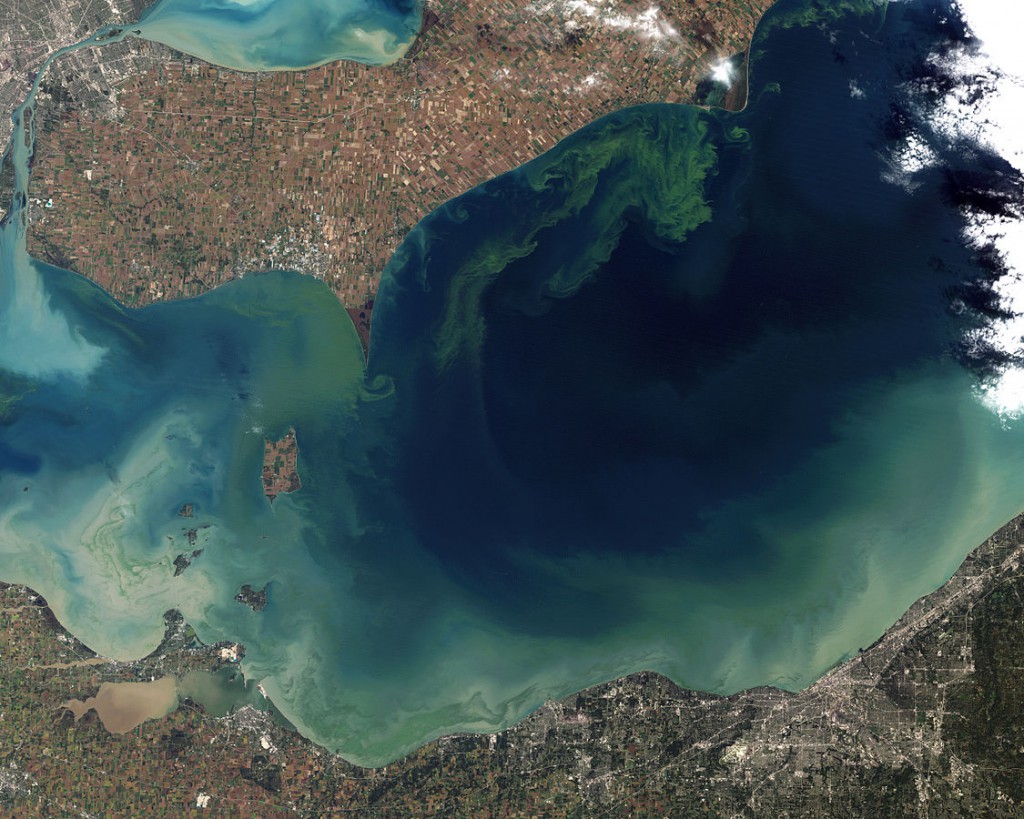University of Michigan and National Oceanic and Atmospheric Administration (NOAA) researchers have forecasted a significant bloom of toxic blue-green algae in Lake Erie late this summer. Expected to be larger than average but considerably smaller than the record-setting 2011 event, the 2014 Lake Erie harmful algae bloom could weigh in at about 22,000 metric tons dry weight. It may also produce toxins that affect drinking water and threaten swimmers. The blooms also can clog boat motors and affect wildlife, including fish populations.

This image was taken in 2011 during one of Lake Erie’s worst algae blooms in decades. Image credit: NASA Earth Observatory
..
Algae blooms in Lake Erie have been increasing over the last decade, and NOAA has issued weekly bulletins for western Lake Erie since 2008. Seasonal forecasts are determined by modeling efforts, using 12-year Lake Erie nutrient-flow data, analysis of satellite data, and in-lake measurements. Key measurements taken throughout the summer also will help further refine the forecasting models. Read more.
The announcement of this forecast follows President Obama’s signing of the Harmful Algal Bloom and Hypoxia Research and Control Amendments Act (S. 1254) on June 30. The new law requires NOAA to maintain and enhance a national program to control and mitigate harmful algal bloom and hypoxia events, and it provides $20.5 million in funding between 2014 and 2018.





